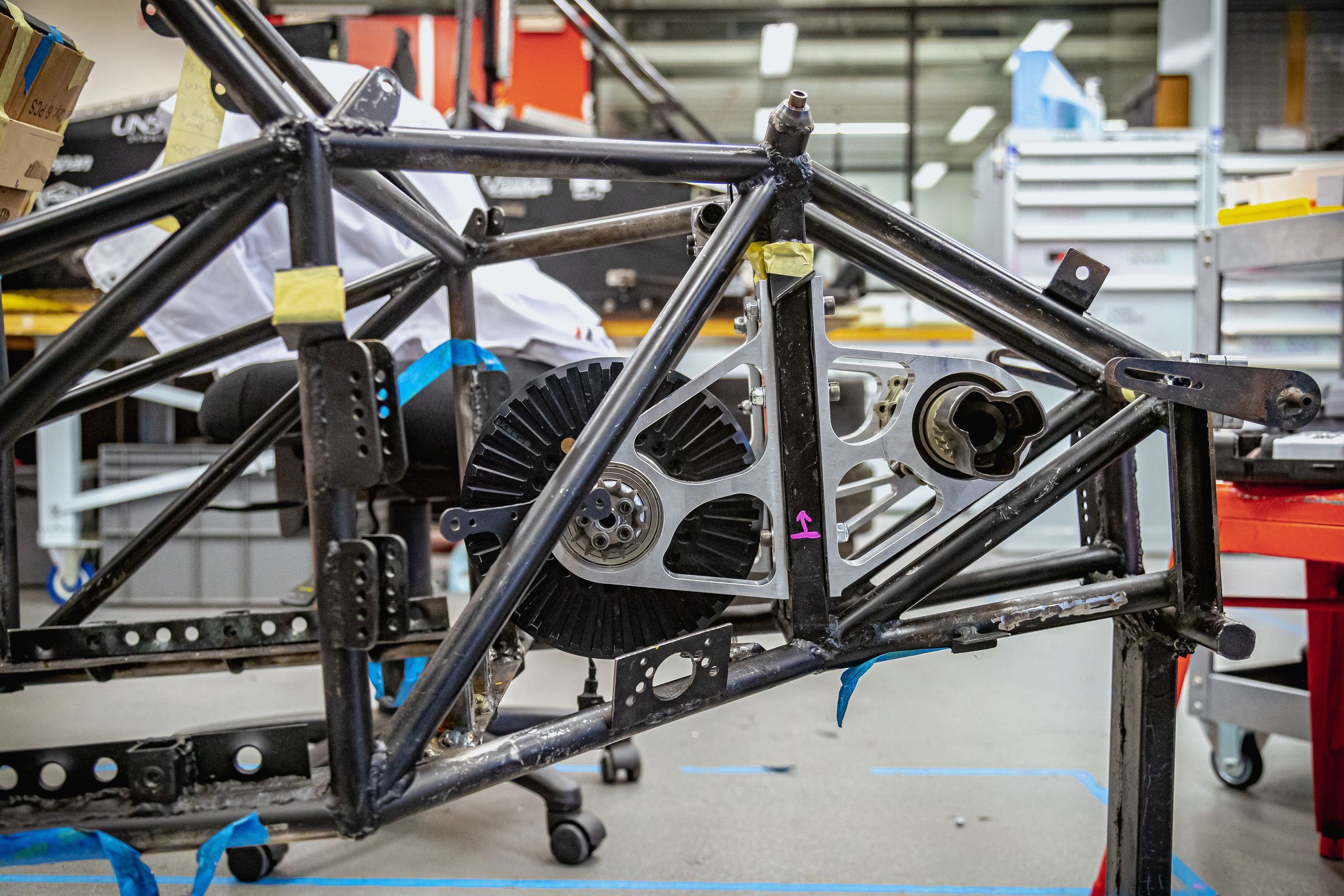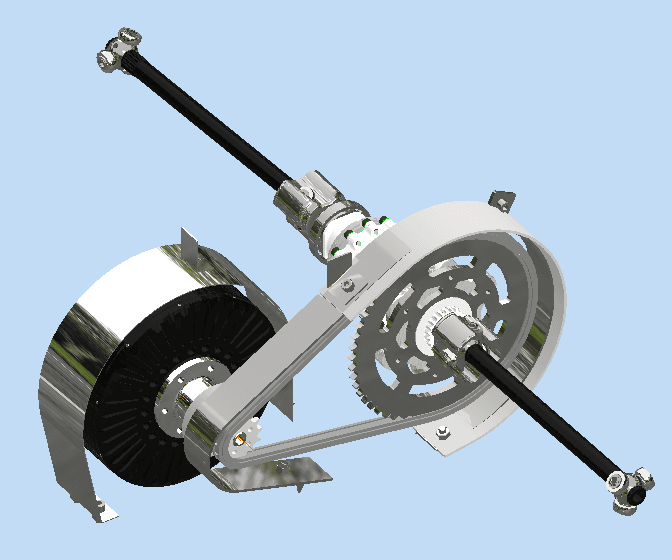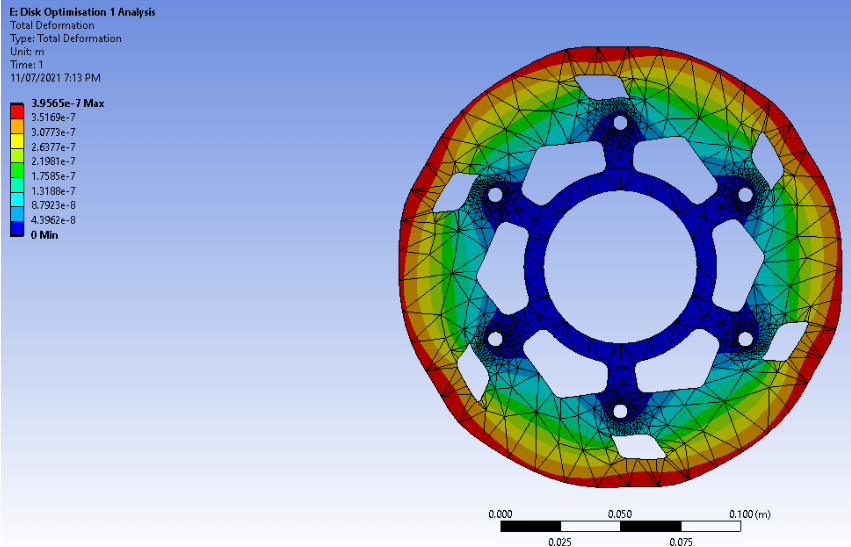
Car Dynamics
Redback Racing • July 29, 2022

Redback Racing • July 29, 2022
Our Dynamics department holds an incredible level of responsibility, as they are tasked with the role of being the first in the design process for the car. Working closely with our Performance Engineering department, Dynamics receives a variety of focus areas that need an improvement or rework (such as grip when cornering). From this, the team works hard on the components of a problem to come up with a complete and refined solution.
Redback Racing’s Dynamics team is divided into two sub-departments:
These two subdepartments work in tandem to ensure that design demands are met and translated accurately to dependent departments such as Structures. Meetings are held regularly both within the department and by the Dynamics lead to ensure that the department is organised in its deadlines and goals.
New members who qualified through our selection system have now started their learning process. Gradually building their skill levels, they learn the design software used and understand internal workflows so that they can soon begin working on full-fledged projects for the team.
As a longstanding team within Redback Racing, Aerodynamics' effort is to meet the design and performance demands required. For many years, the team would only have a handful of students coping with these demands but there has been a recent increase in team numbers to help provide new perspectives through the design process.
Key areas of focus for the team are:

By directing air over the body of the car effectively, large amounts of downforce can be created. This helps the car push the tyres into the ground, increasing the surface area of rubber in contact with the ground, therefore leading to more grip overall. This allows for greater cornering speeds, helping reduce the lap time and running a much closer competition to our rivals.
Aerodynamics works to create the reasoning as to why certain designs should be followed. Using the CFX, Fluent and OpenFoam software, the team generate the simulations to ground the rationale of their designs and begin pushing the boundaries to find the extra performance. Using the Autodesk Inventor CAD system, our Aerodynamics group is able to design the precise geometry and contours. By generating these designs and modelling the potential effects, Redback Racing can generate more refined concepts and make use of the best possible solutions.
A deeper area of focus in component cooling is the planned integration of sidepods, as the benefits of this were previously unappreciated. The design of the sidepods must interact effectively with the air that passes past the car when in motion and then direct it to help cool the motor & inverter.
Aerodynamics also works closely with our Structures department to begin bringing the car’s bodywork and aerodynamic devices to life. Utilising composite materials (such as carbon fibre, Kevlar & fibreglass) the two teams begin creating the specific parts to meet the demands given to them.
In its debut year, Vehicle Modelling has the responsibility of setting the parameters (e.g. weight, size, flexibility) in which the highest-performance design would lie in. As a high-level design process, the Vehicle Modelling team works to find the optimised performance ranges in which the Structures department can construct the car in.
The key zones of focus are:
Striking the balance between all areas of focus is no easy feat. Our Vehicle Modelling team work to cross-reference the designs to best ensure that the path they choose is the correct one. Several systems are required to develop a full palette of information for a design concept, which will assist in providing the depth of knowledge of how it will integrate with the rest of the car. The team currently makes extensive use of the Simulink package from the Matlab suite, which allows for accurate modelling of the effects of certain designs. These assemblies are drawn up on Autodesk Inventor, which allows for further checking if the concepts are viable solutions and assessing further intricacies of the object. Susprog is used to specifically model the suspension and its effects on the overall stiffness of the car and the responsiveness it will have to certain conditions. Optimum Lap allows for laptimes to be generated based on changes in different factors such as the suspension stiffness, the overall weight, etc.
Linking such a wide range of software suites is a difficult process. While some files and designs are available for interoperability between the programs, others require a more roundabout approach. File conversion and extensive use of Microsoft Excel (for value recording and calculation) allow details to be moved through the stages of design undertaken.
Naturally, some designs don’t work the best with others. In these circumstances, our Vehicle Modelling team extracts the best virtues of the unsuccessful prototype and begins applying these to a new design. This allows for the best possible use of their learnings, by further refining their focus and providing greater experience from which they can build. The aim is to iterate through to find the perfect value ranges and blueprints in which these designs can be applied.
Right now, our Dynamics department is pushing hard to complete the bodywork for the car. This will set onto the dynamic chassis, helping provide a surface for smooth airflow and adorn our sponsors to represent in our competitions later this year.

Screenshot of driveline assembly in Inventor CAD software

Screenshot of FEA on a weight-optimized sprocket in ANSYS software